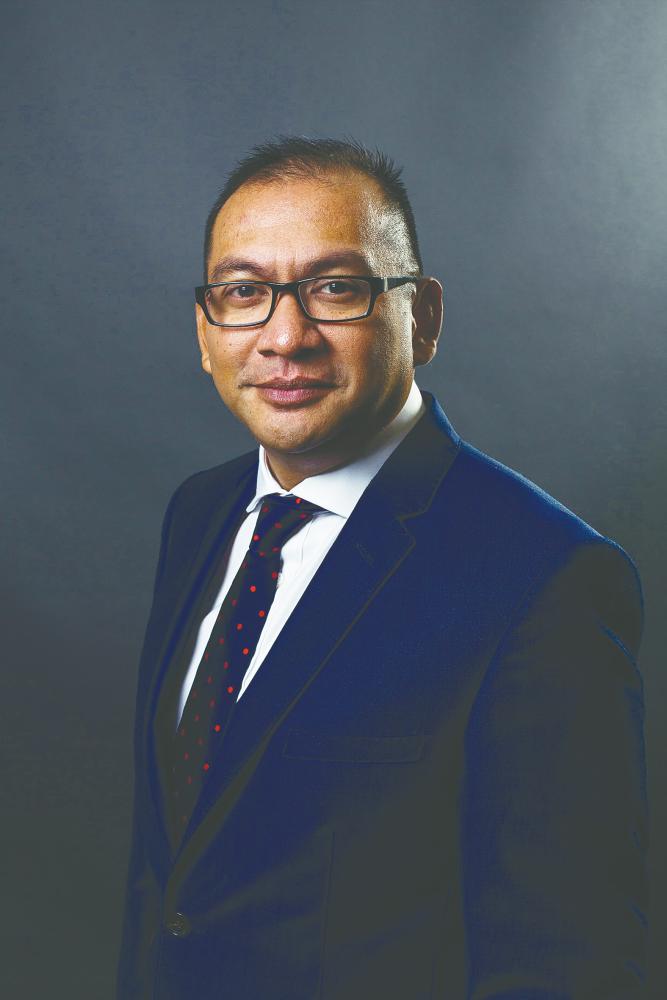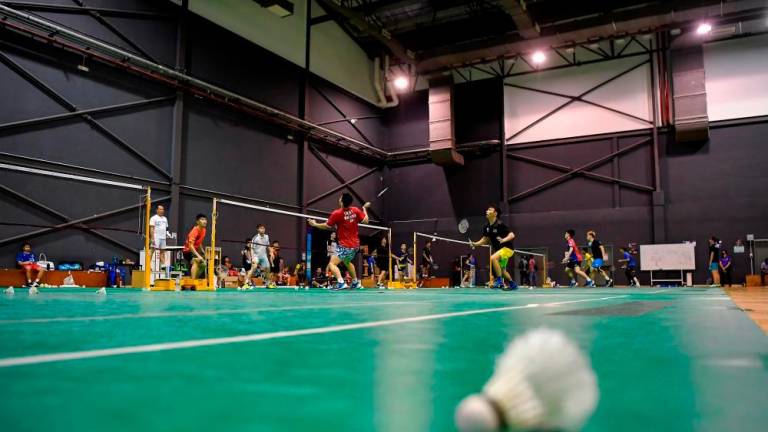AS urban Malaysia continues to throttle towards a completely tech-dependent age,, there is a growing need for the proliferation of code-savvy individuals. But before there can be a need, there must be a desire to want, which leaves us with the question: Do people want to get into the complex labyrinth of coding?
This writer speaks with two individuals from Accenture Malaysia in an attempt to understand and learn.
A global management consulting and professional services firm that specialises in providing strategy, consulting, digital, technology and operations services; Accenture hosted an event called “Hour of Code” several months back. Main guests were 50 underprivileged children from around the Klang Valley. Its goal? Bring or introduce coding skills to as many young people as possible.
HOUR OF CODE
Explaining the Hour of Code that was held in Malaysia, Accenture reps shared that the children were taught the basics of coding by helping a robot discover a new planet through the Accenture Intelligent Space Exploration tutorial developed by Accenture.
Photos of animals and plants were taken and “fed” to the robot so it could differentiate one from the other. After completing each task, the children were awarded with new skills such as “differentiating between friendly and unfriendly aliens”, “teaching the dog tricks”, and so on. The young guests also took part in an engaging quiz that imparted and/or increased their knowledge on Artificial Intelligence (AI) in a simple and fun way.
The Hour of Code itself is a global educational movement, and it particularly strikes close to home for Accenture Malaysia’s managing director Azwan Baharuddin (far right) and the company’s technology delivery lead executive Janet Yap (right).
SPARKING INTERESTS
Speaking on how he began coding at the tender age of 10, Baharuddin said, “I was figuring out how to ‘break’ the game system so that I could get an advantage over computer algorithms. I found the whole subject fun as the opportunities to experiment seemed endless. I would do this for many hours at a time”.
It should be noted that this was during the heyday of computers and coding, back when the two were still in a state of infancy compared to how dynamic and complex they are now, which can be daunting for the regular person to grasp. This “beginning” rang somewhat true for Yap as well.
Before taking on as Accenture’s first female country managing director from 2014 to 2017, Yap reveals that she was interested in science, technology, engineering and mathematics (STEM). This was during a time when the field(s) were largely dominated by men.
“When I studied Computer Science back in the day, there weren’t that many women in the field. Although I was good at logic, there was no one advising me to do Tech. I made the choice based on my strength,” she explains in an email exchange.
Just like gaming, coding has steered away, diverted from being a “boy thing”. Yap points out Malaysia’s own female STEM/techology role models such as Minister of Energy, Science, Technology, Environment and Climate Change Yeo Bee Yin Malaysia’s first astrophysicist, Professor Emeritus Datuk Dr Mazlan Othman; and both the previous and current CEOs of the Malaysia Digital Economy Corp Sdn Bhd (MDEC) - Datuk Yasmin Mahmood and Surina Shukri.
FUNDAMENTALLY SPEAKING
Putting two and two together, it is apparent that coding and STEM-related learning is best started at a young age and not restricted to one gender over the other. It also has to be done according to one’s own strengths and inherent desire, to want to empower oneself with the knowledge and passion to navigate both.
In the city, it is apparent that kids are now more preoccupied with gaming on mobile devices and gaming consoles. Any visit to a restaurant for instance, will net you with at least one child (usually wearing a funny-bowl haircut) clutching an electronic device with a death grip, eyes fixated, mind absorbed. Common sense would dictate pushing children of the current generation (and those in the future) towards activities related to coding.
“I think everyone today should learn how to code. It doesn’t mean that you have to be a programmer at the end of the day, but it will equip you with strong logical foundation on how we can embed strong logic in everything that we do,” Baharuddin points out.
“You can learn how to code by downloading simple apps on your mobile devices, go online and learn from YouTube videos, or join forums on how to start. There are communities out there who are eager to get you learning and eventually contributing to improve the world in exciting ways. Be open, adventurous and experiment. It’s not Add-Math you know!”
EVEN THE ODDS
On whether she sees the growing interest in STEM-related fields by the younger set skewing more towards an urban demographic - Yap agrees.
“It would seem so, because schools in rural or semi-urban areas have less access to STEM-related facilities, talks and events. This is of concern to all of us. When automation and robotics reduce the number of repetition-based jobs, we need to ensure that all the next-generation children are skilled to work with science and technology,” she says.
“With the government’s efforts to provide affordable and accessible telecommunications infrastructure to the whole country, children in sub-urban and rural areas will have a better opportunity to develop their interest in STEM,” Yap foresees.
Then again, as one can only hope for the latter, the priority as of now still lies in equipping the urban young with the necessary STEM knowledge, be it coding or otherwise, to face the disruptive technologies that have already found a way to weave itself into our lives on account of the Fourth Industrial Revolution. - by Mark Mathen Victor
AS urban Malaysia continues to throttle towards a completely tech-dependent age,, there is a growing need for the proliferation of code-savvy individuals. But before there can be a need, there must be a desire to want, which leaves us with the question: Do people want to get into the complex labyrinth of coding?
This writer speaks with two individuals from Accenture Malaysia in an attempt to understand and learn.
A global management consulting and professional services firm that specialises in providing strategy, consulting, digital, technology and operations services; Accenture hosted an event called “Hour of Code” several months back. Main guests were 50 underprivileged children from around the Klang Valley. Its goal? Bring or introduce coding skills to as many young people as possible.
Hour of Code
Explaining the Hour of Code that was held in Malaysia, Accenture reps shared that the children were taught the basics of coding by helping a robot discover a new planet through the Accenture Intelligent Space Exploration tutorial developed by Accenture.
Photos of animals and plants were taken and “fed” to the robot so it could differentiate one from the other. After completing each task, the children were awarded with new skills such as “differentiating between friendly and unfriendly aliens”, “teaching the dog tricks”, and so on. The young guests also took part in an engaging quiz that imparted and/or increased their knowledge on Artificial Intelligence (AI) in a simple and fun way.
The Hour of Code itself is a global educational movement, and it particularly strikes close to home for Accenture Malaysia’s managing director Azwan Baharuddin (far right) and the company’s technology delivery lead executive Janet Yap (right).
Sparking interests
Speaking on how he began coding at the tender age of 10, Baharuddin said, “I was figuring out how to ‘break’ the game system so that I could get an advantage over computer algorithms. I found the whole subject fun as the opportunities to experiment seemed endless. I would do this for many hours at a time”.
It should be noted that this was during the heyday of computers and coding, back when the two were still in a state of infancy compared to how dynamic and complex they are now, which can be daunting for the regular person to grasp. This “beginning” rang somewhat true for Yap as well.
Before taking on as Accenture’s first female country managing director from 2014 to 2017, Yap reveals that she was interested in science, technology, engineering and mathematics (STEM). This was during a time when the field(s) were largely dominated by men.
“When I studied Computer Science back in the day, there weren’t that many women in the field. Although I was good at logic, there was no one advising me to do Tech. I made the choice based on my strength,” she explains in an email exchange.
Just like gaming, coding has steered away, diverted from being a “boy thing”. Yap points out Malaysia’s own female STEM/techology role models such as Minister of Energy, Science, Technology, Environment and Climate Change Yeo Bee Yin Malaysia’s first astrophysicist, Professor Emeritus Datuk Dr Mazlan Othman; and both the previous and current CEOs of the Malaysia Digital Economy Corp Sdn Bhd (MDEC) - Datuk Yasmin Mahmood and Surina Shukri.
Fundamentally speaking
Putting two and two together, it is apparent that coding and STEM-related learning is best started at a young age and not restricted to one gender over the other. It also has to be done according to one’s own strengths and inherent desire, to want to empower oneself with the knowledge and passion to navigate both.
In the city, it is apparent that kids are now more preoccupied with gaming on mobile devices and gaming consoles. Any visit to a restaurant for instance, will net you with at least one child (usually wearing a funny-bowl haircut) clutching an electronic device with a death grip, eyes fixated, mind absorbed. Common sense would dictate pushing children of the current generation (and those in the future) towards activities related to coding.
“I think everyone today should learn how to code. It doesn’t mean that you have to be a programmer at the end of the day, but it will equip you with strong logical foundation on how we can embed strong logic in everything that we do,” Baharuddin points out.
“You can learn how to code by downloading simple apps on your mobile devices, go online and learn from YouTube videos, or join forums on how to start. There are communities out there who are eager to get you learning and eventually contributing to improve the world in exciting ways. Be open, adventurous and experiment. It’s not Add-Math you know!”
Even the odds
On whether she sees the growing interest in STEM-related fields by the younger set skewing more towards an urban demographic - Yap agrees.
“It would seem so, because schools in rural or semi-urban areas have less access to STEM-related facilities, talks and events. This is of concern to all of us. When automation and robotics reduce the number of repetition-based jobs, we need to ensure that all the next-generation children are skilled to work with science and technology,” she says.
“With the government’s efforts to provide affordable and accessible telecommunications infrastructure to the whole country, children in sub-urban and rural areas will have a better opportunity to develop their interest in STEM,” Yap foresees.
Then again, as one can only hope for the latter, the priority as of now still lies in equipping the urban young with the necessary STEM knowledge, be it coding or otherwise, to face the disruptive technologies that have already found a way to weave itself into our lives on account of the Fourth Industrial Revolution. - by Mark Mathen Victor
Kids Code
Websites on coding
classes for kids.
www.itrain.com.my
www.codinglab.my
www.codejuniors.com
www.kidocode.com
www.kids.gocodemy.com
www.ciyclub.com.my
The age of intelligent technology calls for growth and development, which leads to needed change to keep abreast of the new and current. New skills need to be acquired; similarly, new ways of working; and most definitely, new mindsets that are open to experiment and explore beyond regular boundaries. While progress is impossible without change, and change can be scary for some, let’s summon a positive attitude as per the words of Anthony Robbins, who said: “Stop being afraid of what could go wrong and start being excited about what could go right.”













